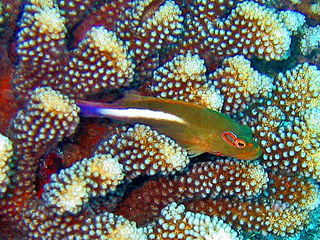
Johann Gottlob Theaenus Schneider was a German classicist and naturalist.

Salminus brasiliensis is a large, predatory characiform freshwater fish found in central and east-central South America. Despite having Salminus in its name, the dorado is not related to any species of salmon, nor to the saltwater fish also called dorado. It is very popular among recreational anglers and supports large commercial fisheries.

The jolthead porgy is an ocean-going species of fish in the family Sparidae. In Bermuda, it is known as the blue bone porgy, in the United States, it is also known by the Spanish name bojanado, in Jamaica, it is one of the species known by the name, porgi grunt.

Hoplias aimara, also known as anjumara, traira, trahira, manjuma, anjoemara and wolf fish, is a species of freshwater fish found in the rivers of South America. In Amazonia, the native populations are concerned by high levels of mercury contamination which has been linked to the consumption of contaminated fish. H. aimara is a good bioindicator of such contamination.

Erythrinus is a genus of relatively small trahiras, freshwater fish from tropical South America.

Hoplias is a genus of fish in the family Erythrinidae found in Central and South America.

Hoplias malabaricus, also known as the wolf fish, tiger fish, guabine or trahira, is a predatory Central and South American freshwater ray finned fish of the characiform family Erythrinidae.
Trypauchen vagina, commonly known as the burrowing goby, is a species of eel goby found in the Indo-Pacific region. It has an elongated body about 20 to 22 cm in length. It is reddish-pink in color and possesses distinctive pouches in the upper edges of its gill covers. It lives in burrows in the silty and muddy bottoms of its marine and brackish habitats. It has reduced eyes that are entirely covered with skin and the anterior portion of its head is protected by thick flesh. Both adaptations aid it in digging its burrows.
Hoplias curupira, also known as the black wolf-fish, has a wide distribution in the Amazon basin but was described as recently as 2009.
Hoplias australis is a predatory freshwater characin fish of the southern Neotropics.
Hoplias brasiliensis is a species of trahiras. It is a benthopelagic, tropical freshwater fish which is known from coastal rivers in northeastern Brazil, including the Paraguaçu River in Bahia, the Pardo River, the Jequitinhonha River in Minas Gerais and Espírito Santo, and the Contas River. Male H. brasiliensis can reach a maximum length of 20.3 centimetres.
Hoplias lacerdae is a predatory freshwater characin fish from South America.
Hoplias microcephalus is a species of trahiras. It is a tropical, benthopelagic freshwater fish which is known to inhabit the São Francisco River in Brazil. Males can reach a maximum length of 35.6 centimetres.
Hoplias patana is a species of trahiras. It is a freshwater fish which is known from Cayenne, French Guiana. The maximum length recorded for this species is 39.4 centimetres.
Hoplias teres is a species of trahiras. It is a tropical, benthopelagic freshwater fish which is known to inhabit Lake Maracaibo in Venezuela. Males can reach a maximum length of 15.3 centimetres.
Erythrinus kessleri is a species of trahira. It is a tropical, freshwater fish which is known from coastal rivers in Bahia, Brazil; the type locality is the Itapicuru River. It was described by Franz Steindachner in 1877. Males can reach a maximum standard length of 19 centimetres.
Hoplerythrinus cinereus is a species of trahira. It is a tropical, pelagic freshwater fish which is known from the Island of Trinidad off northeastern Venezuela. Males can reach a maximum standard length of 20.2 cm.

Paracirrhites is a genus of hawkfishes found on tropical reefs of the Indian Ocean and Pacific Ocean.
The black-striped snake eel is an eel in the family Ophichthidae. It was described by Johann Gottlob Theaenus Schneider and Johann Reinhold Forster in 1801. It is a tropical, marine eel which is known from the Indo-Pacific, including the Red Sea, East Africa, the Society Islands, the Ryukyu Islands, and Lord Howe Island. It dwells at a depth range of 1–32 metres, and inhabits reefs. It burrows into loose gravel and sand. Males can reach a maximum total length of 85 centimetres.
The silver sharpjaw bonefish is a species of marine fish found in the tropical western Pacific Ocean. They grow up to 70 cm (28 in).








